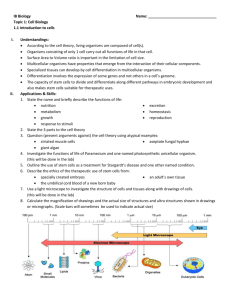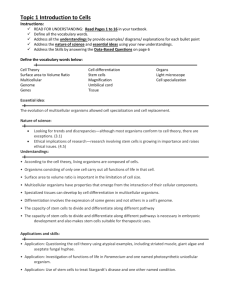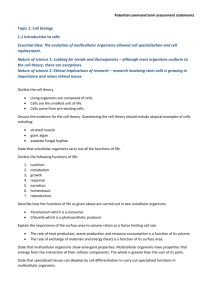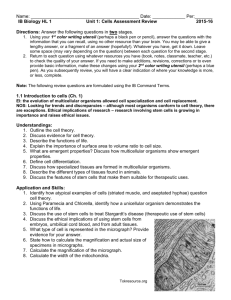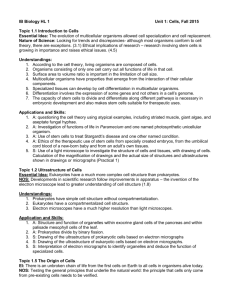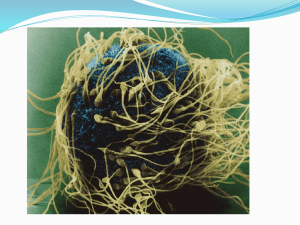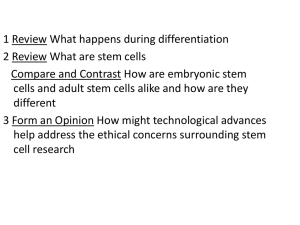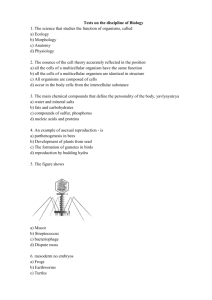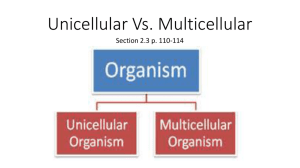Cell Biology: Introduction to Cells & Origin of Cells
advertisement
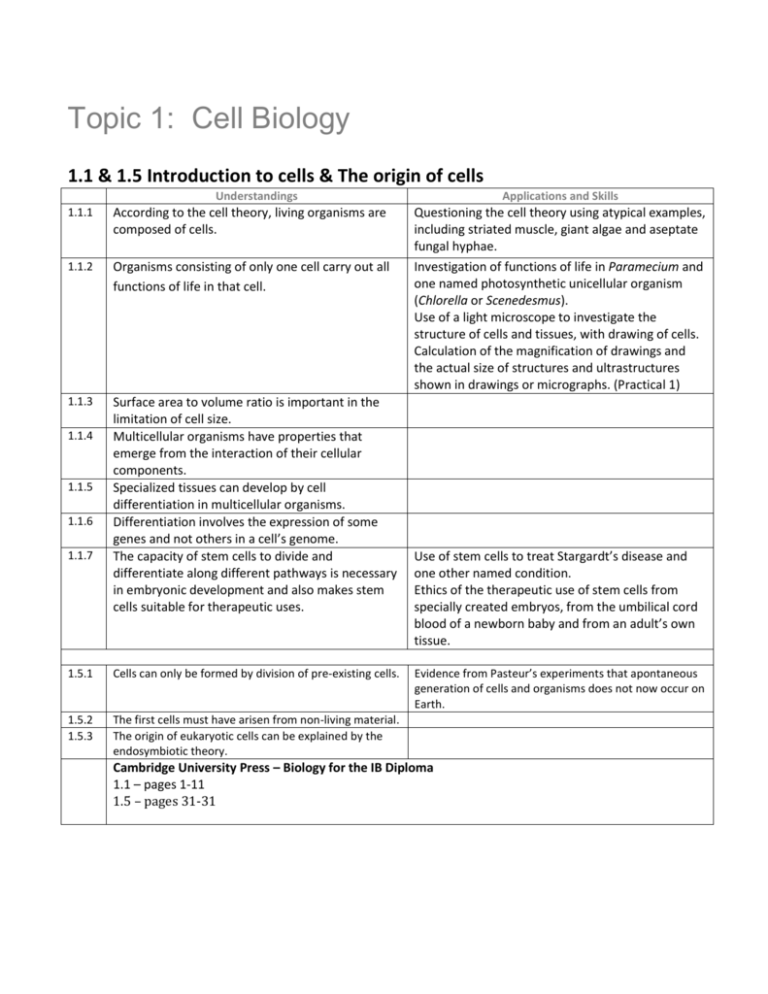
Topic 1: Cell Biology 1.1 & 1.5 Introduction to cells & The origin of cells Understandings 1.1.1 According to the cell theory, living organisms are composed of cells. 1.1.2 Organisms consisting of only one cell carry out all functions of life in that cell. 1.1.3 Surface area to volume ratio is important in the limitation of cell size. Multicellular organisms have properties that emerge from the interaction of their cellular components. Specialized tissues can develop by cell differentiation in multicellular organisms. Differentiation involves the expression of some genes and not others in a cell’s genome. The capacity of stem cells to divide and differentiate along different pathways is necessary in embryonic development and also makes stem cells suitable for therapeutic uses. 1.1.4 1.1.5 1.1.6 1.1.7 1.5.1 Cells can only be formed by division of pre-existing cells. 1.5.2 1.5.3 The first cells must have arisen from non-living material. The origin of eukaryotic cells can be explained by the endosymbiotic theory. Applications and Skills Questioning the cell theory using atypical examples, including striated muscle, giant algae and aseptate fungal hyphae. Investigation of functions of life in Paramecium and one named photosynthetic unicellular organism (Chlorella or Scenedesmus). Use of a light microscope to investigate the structure of cells and tissues, with drawing of cells. Calculation of the magnification of drawings and the actual size of structures and ultrastructures shown in drawings or micrographs. (Practical 1) Use of stem cells to treat Stargardt’s disease and one other named condition. Ethics of the therapeutic use of stem cells from specially created embryos, from the umbilical cord blood of a newborn baby and from an adult’s own tissue. Evidence from Pasteur’s experiments that apontaneous generation of cells and organisms does not now occur on Earth. Cambridge University Press – Biology for the IB Diploma 1.1 – pages 1-11 1.5 – pages 31-31
